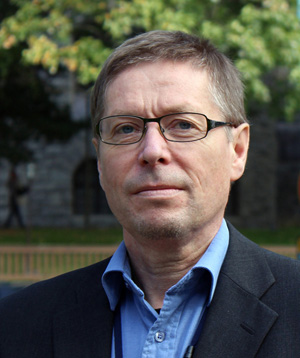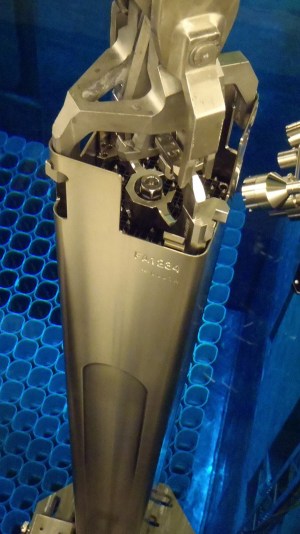Implementation of a new fuel type is a multi-year project
In this year's annual outage, lead use assemblies of new fuel types were loaded into the reactors in Olkiluoto, AREVA's ATRIUM 11 from Germany into OL1, and SVEA-96 Optima3 made in Sweden by Westinghouse Electric Sweden to OL2.

According to Kari Ranta-Puska, Head of Fuel Technology in TVO, procurement and implementation of new fuel types is persistent work.
- Decision on the test programs of the new fuel types that started in the last annual outage was made already in 2010. The aim of a test program is to follow the behavior of the fuel in the reactor in small scale first.
The licensing process comprising the feasibility study of the fuels together with regulatory review was started in 2012. Suitability of the fuels for the reactors as well as fulfillment of strict safety criteria was confirmed.
- The licensing process generally takes about a year. The first half of 2013 was devoted to handling of detailed drawings, specifications and manufacturing and inspection plans and the latter half in controlling the manufacture of the fuel assemblies, Ranta-Puska tells.
It is not very often that new fuel types are procured to Olkiluoto. During their just over 35-year history, OL1 and OL2 have had 15 new fuel types licensed so far.
There are a total of 500 fuel assemblies in the reactor and 100–110 assemblies are annually replaced in the outage. So each assembly will be used for 4–5-years. The number of lead use assemblies is generally 4–8 of one type i.e. under 10 percent of the number of the assemblies to be replaced.
We can say that uranium is a bulk product but design and manufacture of fuel assemblies is cutting-edge technology. The durability of the materials should be very high. Radiation may change their properties in a way which we must be able to prepare for. The materials must not become brittle or corrode significantly. Precise limits have been set to the dimensional changes and strength of the fuel components. Product development improves durability, safety and energy obtained from the fuel. By means of lead use assemblies the improvements can be verified in a controlled way. - One example of product development has been the development of the fuel assembly debris filter so that it effectively prevents foreign objects that may end up in the primary circuit from entering the fuel assembly. Such objects can mechanically damage the fuel rod cladding and cause fuel leakage. - We follow the developments in the field actively and regularly receive new knowledge and operating experiences from around the world. We always make our fuel purchases advisedly. Our principle is not to be the first to acquire state-of-the-art new. We require that the product is not only thoroughly tested but also to some extent in use elsewhere. In nuclear fuel technology, steps have to be taken cautiously. However, we have now the most modern products of our fuel suppliers in our reactors. This makes it possible to maintain a good and fair competition, Ranta-Puska explains. Currently we have in TVO an evaluation of tenders regarding fuel deliveries for the years 2016–2019 going on. Our aim is to make decisions during this fall. The contracts are usually made for 3–4 years. Manufacturing of fuel assemblies accounts for approximately 20 percent of the total price of the fuel supply chain. Nuclear fuel fabrication is high-tech
Nuclear fuel fabrication is high-tech
Fuel purchases are made advisedly
Share